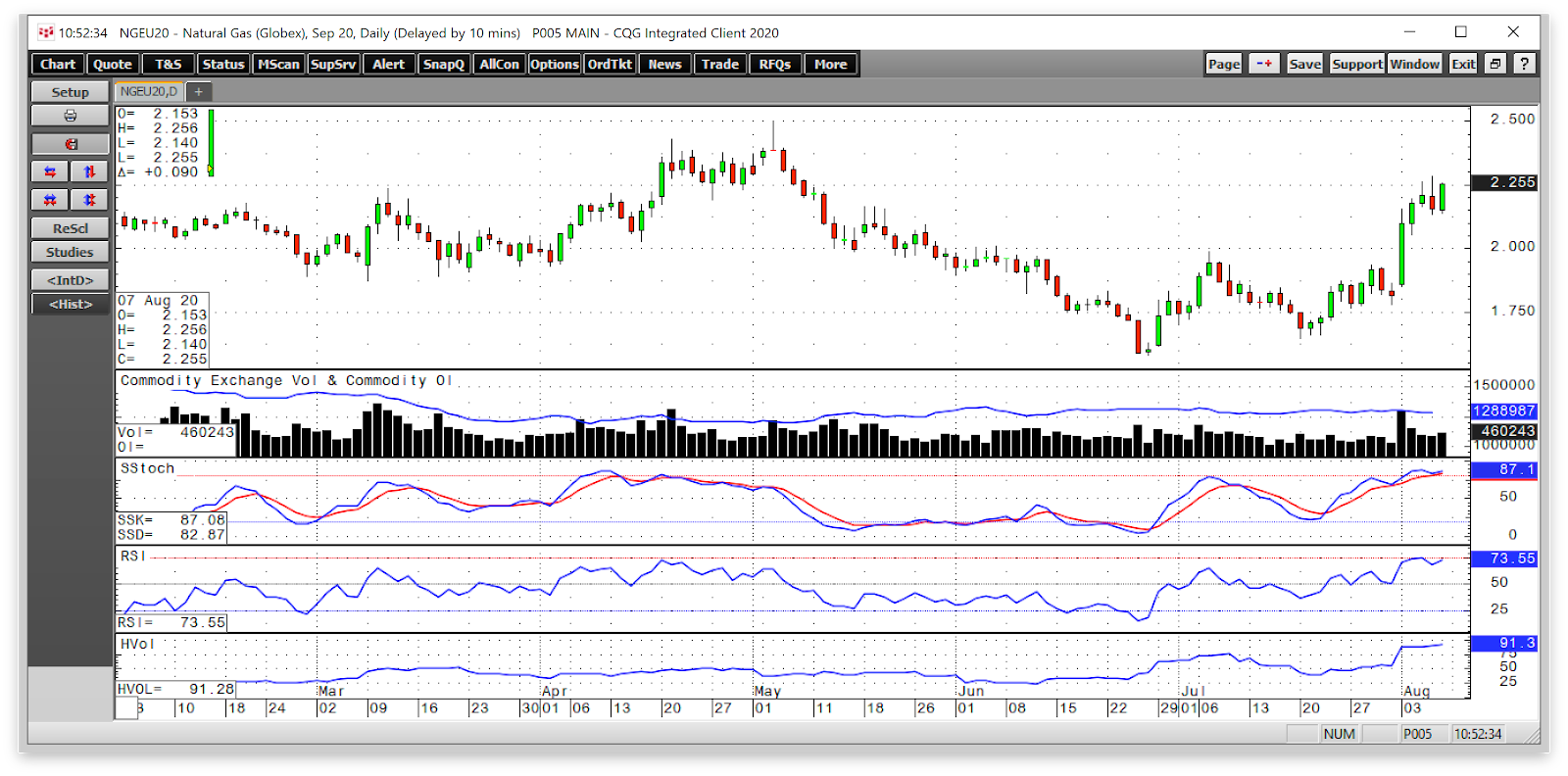In late March, the price of natural gas fell to a quarter-of-a-century low of $1.519 per MMBtu. After a recovery that took the nearby futures contract to $2.162 in early May, selling returned to the market, and the price dropped to an even lower low at $1.432 per MMBtu by late June. I had been writing that the odds favored another recovery from the new 25-year low as the cure for low prices in commodity markets is low prices.
Since trading to the June lows, natural gas has made an impressive comeback. The falling level of injections into inventory provided fundamental support to the energy commodity. At the same time, the diminishing number of operating rigs means that production is falling.
In July, news that Warren Buffett made a $10-billion investment in the natural gas industry with the purchase of Dominion Energy's (NYSE:D) transmission and pipeline infrastructure likely made some speculators think twice about shorting the energy commodity at the lowest price in two-and-a-half decades. Natural gas came storming back last week, and rose above the early May high, reaching a peak of $2.284 per MMBtu on Aug. 6.
The United States Natural Gas Fund (NYSE:UNG) tracks the price of NYMEX futures. The BOIL (NYSE:BOIL) and KOLD ETN (NYSE:KOLD) products provide double leverage for short-term traders looking to participate in the volatile natural gas market without venturing into the futures arena.
Rally To Over $2 As Expected
When natural gas was trading below $1.80 per MMBtu, I had written that I expected a recovery to over the $2 per MMBtu level. The injections into inventory have been at low levels.
According to Baker Hughes, the number of rigs operating was 100 below last year, with 69 in operation as of Aug. 7. Moreover, we are now in the final month of the summer season, and the futures market reflects fall prices. The 2020-21 withdrawal season will start in November, and natural gas often rallies with the uncertainty of the winter on the horizon.

Source: CQG
The daily chart of September futures shows that natural gas fell to a low of $1.583 on June 26. After a rally that fell short of the $2 level, the price reached a higher low of $1.646 on July 20. Last Monday, September futures rose above the July 7 high and moved through the $2 level as a hot knife goes through butter.
The price moved to a high of $2.284 on Aug. 6. Price momentum and relative strength indicators were in overbought conditions. Daily historical volatility spiked higher to over 91% as the daily trading ranges expanded. Meanwhile, the total number of open long and short positions edged lower to the 1.289-million contract level at the end of last week. Speculative shorts likely exited risk positions during last week’s rally.
On Aug. 6, the price reached its latest high. Above last week’s peak, the next technical resistance level stands at the early May high of $2.499 per MMBtu on the September futures contract. Natural gas settled at the $2.238 level on Friday, Aug. 7, not far below the peak of the week.
Natural Gas Could Run Into Selling For 3 Reasons
While I expected a move to over the $2 level, I cautioned that natural gas is not likely to run away on the upside at the beginning of August. The leading reason I expect another pullback is that the market has conditioned speculative shorts to sell the energy commodity on any rally over the past months. Selling at over $2 has been a profitable approach to the market in 2020.
The second reason for caution is that while stockpile injections have been small, at 3.274 trillion cubic feet, inventories are high for this time of the year. At the end of the injection season in 2019, stocks rose to a high of 3.732 trillion cubic feet, which set the bearish tone for 2020. Reaching that level by November would require an average of a 30.53-bcf injection into storage over the coming 15 weeks. It is likely that stocks will rise to the 4-trillion-cubic-feet level for only the third time since the EIA reported inventories.
Finally, open interest has not increased with the price, which is often a warning sign for a futures market. The slight decline in the metric is a sign of short covering, but not of any substantial new longs coming to the market in early August.
The odds favor another move below the $2 level. Meanwhile, a higher low above the July 20 technical support level at $1.646 would be a constructive sign and a reason for a long position on a price dip with a tight stop below the higher low.
Trading The Range For Coming Weeks
I expect natural gas to settle into a trading range over the coming weeks. The $1.70 to $2.20 level could become a comfort zone for the energy commodity. The upside action tends to come in October through December each year during the start of the peak season of demand during the winter months. Natural gas for delivery in January 2021 settled at $3.147 per MMBtu on Aug. 7, which was above the November 2019 high at $2.905.
A short position with a tight stop could be the optimal approach to the September natural gas futures contract over the coming week. The odds favor another move to the downside after the most recent upside correction.
